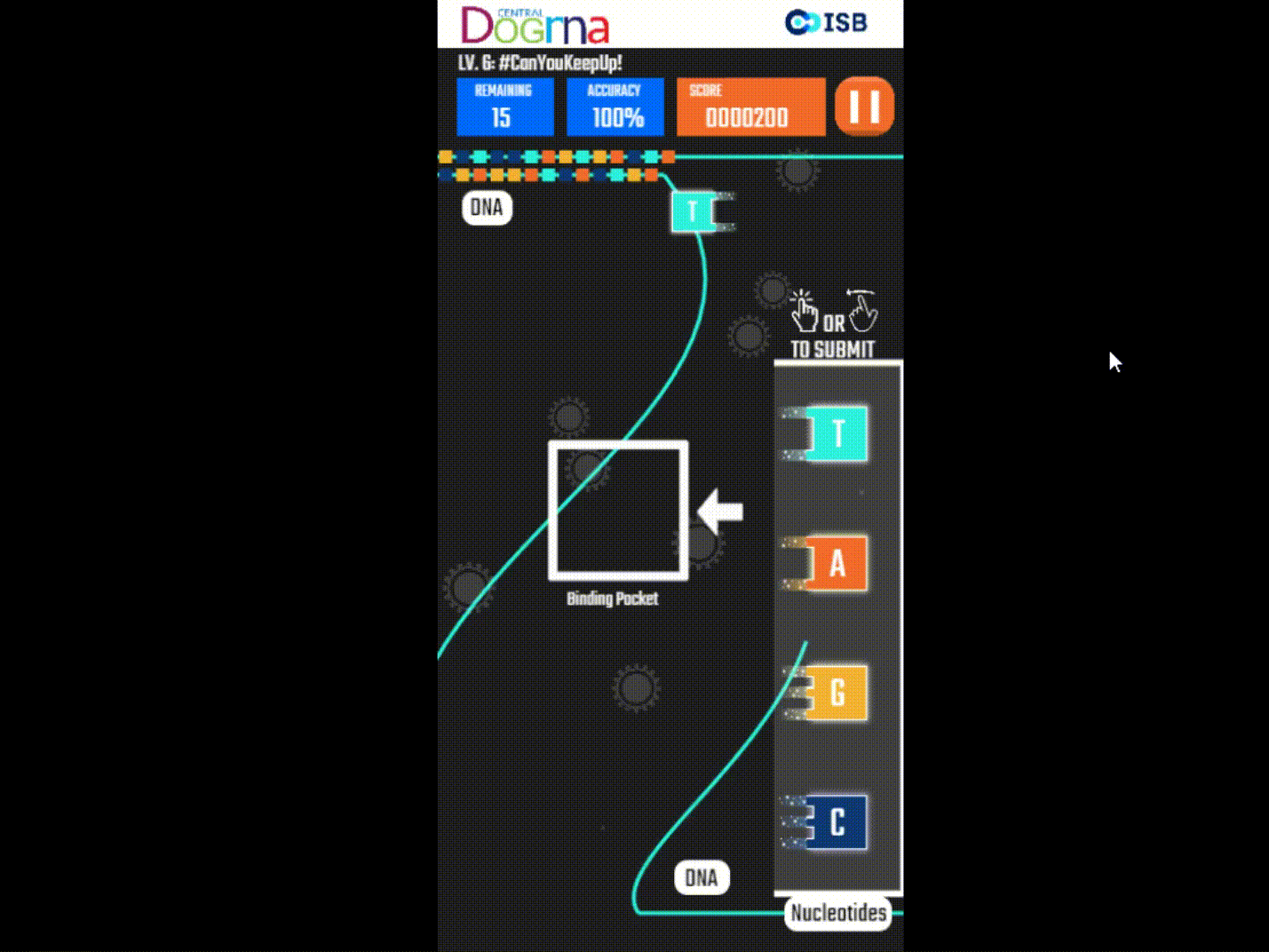The Power of Touchscreens: ISB Researchers Develop Game to Help Students Learn Molecular Biology
Pop quiz: What’s the difference between DNA, RNA and proteins? ISB researchers have created a video game that teaches secondary students (grades 6-12) the key tenets of molecular biology in a fun, interactive and engaging way, and can be used by teachers as a supplemental aide to assist with complex lessons.


Pop quiz: What’s the difference between DNA, RNA and proteins? If you’re racking your brain to remember your high school science classes, you’re not alone.
Molecular biology is complicated business, and teaching core concepts to students is undoubtedly challenging — even in non-pandemic times.
In response to this problem, ISB researchers have created a video game that teaches secondary students (grades 6-12) the key tenets of molecular biology in a fun, interactive and engaging way, and can be used by teachers as a supplemental aide to assist with complex lessons.
“The Central Dogma of Molecular Biology game can be used to asynchronously introduce critical concepts related to the flow of information from DNA to RNA to proteins, which are fundamental to understanding biology, evolution and human health,” said ISB Research Scientist Dr. Jacob Valenzuela. The game is free and web-based, and can operate on any smartphone or computer browser — though the game creators say it works best with a touchscreen.
Equal Access to STEM Concepts
Valenzuela and his colleagues created this game with STEM equity in mind, and it directly addresses the challenge of scalability in STEM education. “We knew a web-based game would provide access to millions of students across the country and around the globe, particularly as internet connectivity continues to rise,” he said.

But does the game work, and is it fun?
Initial indications are extremely promising. Early beta test results showed that nearly 80 percent of students that played the game were more interested in learning about the Central Dogma of Molecular Biology. Nearly 90 percent of students said they had fun playing the game, which is important to maintaining engagement.
“It was super fun! The music is super catchy,” said one high school senior.
“I think it’s cool that it shows the idea of mutation. I can definitely see it being a helpful tool for a freshman year biology class,” said another student.
Plus, teachers can monitor the performance of their students, and address specific areas that are proving to be a challenge.
“We spend a lot of time teaching the central dogma and how DNA codes for specific proteins,” said Ellie Rider, who teaches Agricultural Science and Biology at North Kitsap High School, located about 20 miles west of Seattle. “This game would be so much fun to either use as a friendly competition within the class or as a supplemental activity to help solidify the ideas of the central dogma. It is awesome!”
Framework for the Future
Central Dogma of Molecular Biology is ISB’s first iteration of a gaming platform, but there are a number of educational avenues to pursue with it as a template. For example, developers can create gaming frameworks for systems medicine, gut microbiome health, environmental sustainability, and any other topic area. “The opportunities are limitless. If we can think of it, we can create it,” Valenzuela said.
This work came about thanks to the Innovator Awards Program, which was created to catalyze the development of collaborative research for innovation and discovery within ISB. Valenzuela is the lead investigator of this project, and he worked closely with his collaborators Becky Howsmon, Wei-Ju Wu, Nyasha Chambwe, Jen Eklund and Lauren Bricker. Importantly, UW undergraduate students did most of the coding for the game. Working to develop a game was a unique experience for the students, who gained valuable experience working with a diverse team, similar to a fast-paced startup environment.
The team’s expertise includes systems thinking, molecular biology, software development, and STEM practices.
“Thanks to funding from the Innovator Award Program, a cross-disciplinary team of scientists from several labs within and outside of ISB were able to work together with a common goal,” Valenzuela said.


